An embedded processor is a microprocessor designed to perform a dedicated function within a larger mechanical or electrical system. Unlike the general-purpose processors found in personal computers or servers, embedded processors are optimized for specific tasks and are “embedded” into devices that are not primarily computers.
Where are embedded processors used?
The applications for embedded processors are diverse. They are found in a vast array of products, including:
- Consumer electronics: Wearables like smartwatches and smart glasses, smart home devices such as thermostats and media hubs, and smart cameras.
- Industrial and commercial systems: Commercial robots, automated optical inspection systems, and high-resolution sensors.
- Edge computing: Devices that process data locally, at the “edge” of the network, rather than sending it to the cloud. This is necessary for applications requiring real-time responses, such as autonomous vehicles.
Key characteristics
Embedded processors are designed with a unique set of constraints and goals in mind:
- Size and power efficiency: Many embedded systems are small and may be battery-powered, so the processors must be compact and consume minimal power. The ARM Cortex-A32, for example, is highlighted as being ARM’s smallest and lowest-power ARMv8-A processor.
- Performance for specific tasks: While they may not have the raw power of a high-end desktop CPU, embedded processors are engineered to deliver exceptional performance for their intended applications. For instance, the NVIDIA Jetson Xavier NX is a compact module that brings supercomputer-level performance to edge devices, capable of running AI neural networks.
- Rich I/O capabilities: Embedded processors need to interface with a variety of sensors, actuators, and other components. This requires a rich set of input/output (I/O) options, from high-speed interfaces like CSI (for cameras) and PCIe to low-speed ones like I2Cs and GPIOs. Figure 1 illustrates a typical architecture where the central processor connects to memory, sensors (like a CMOS sensor), and various communication ports.
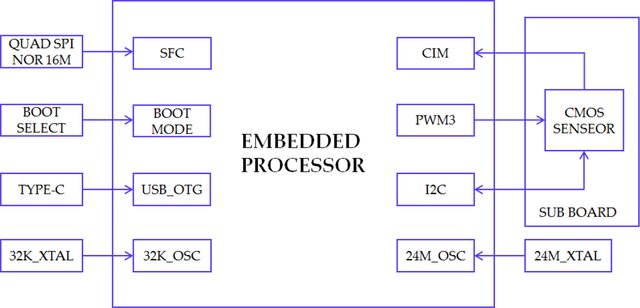
- Cost-effectiveness: Since they are often used in mass-produced devices, embedded processors need to be affordable.
How do embedded processors differ from general-purpose processors?
The fundamental difference lies in their intended use. General-purpose processors, like those in laptops and servers, are designed to run a wide variety of software and handle diverse workloads. Embedded processors, on the other hand, are tailored for a narrower range of tasks.
This specialization leads to different design priorities. While a server processor might prioritize maximum computational throughput, an embedded processor in a wearable device will prioritize low power consumption and a small form factor above all else. The embedded market is served by different families of processors, each optimized for specific requirements. For example, ARM’s Cortex processor families, as shown in Figure 2, target different applications.
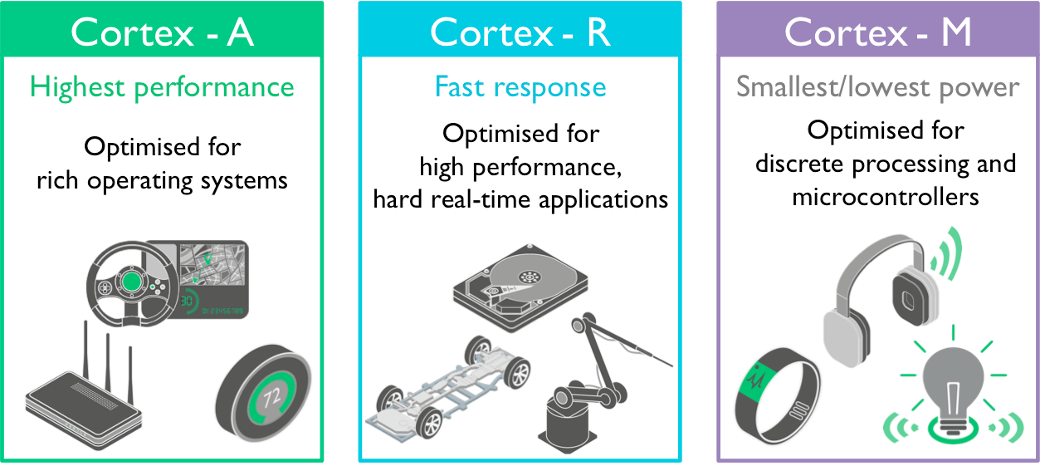
Summary
Embedded processors are specialized chips designed for dedicated functions in devices like smartwatches and industrial robots. Unlike general-purpose CPUs, they prioritize power efficiency, cost, and task-specific performance. Processor families like ARM’s Cortex series (A, R, M) optimize for different needs, from running rich operating systems to simple microcontroller tasks.
References
A Fast and High-Accuracy Real-Time Visible Light Positioning System Based on Single LED Lamp With a Beacon, IEEE Xplorer
Introducing the Arm Cortex-A32 – Architectures and Processors blog, Arm
What is Embedded Processor 2023, EmbedIC
EE World related content
Key factors to optimize power consumption in an embedded device
What are the top tools for developing embedded software?
What’s special about embedded microcontrollers?
General tips on debugging embedded hardware
Enabling embedded devices for the IoT
Overview of embedded systems
What is an embedded processor?
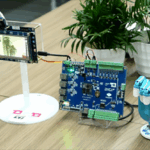
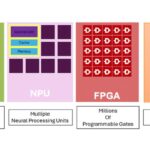


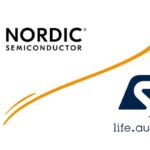
Leave a Reply